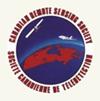无人机和高分辨率卫星测绘加拿大岩石地盾地貌中的草食地衣(Cladonia spp.)
IF 2.1
4区 地球科学
Q3 REMOTE SENSING
引用次数: 19
摘要
摘要驯鹿地衣(Cladonia spp.)是林地和荒地驯鹿群的重要食物来源。在这项研究中,我们使用无人机(UAV)传感器和高分辨率卫星传感器评估了西北地区Yellowknife附近加拿大地盾岩石景观中Cladonia分类的准确性。在无人机规模上,从多光谱可见光近红外传感器(Micasense Altum)得出的随机森林分类在绘制Cladonia地图方面的准确率平均比使用传统彩色RGB相机(DJI Phantom 4 RTK)高5%(即95.5%)。我们从三个5 ha研究站点,使用WorldView-3和Planet CubeSat卫星图像的预测特征训练地衣覆盖率的随机森林回归模型。WorldView模型在6 在独立研究地点测试时,m分辨率的平均RMSE为6.8%(R2=0.61),优于6 m行星模型,其RMSE为9.9%(R2=0.34)。这些卫星结果与以前专注于林地的地衣测绘研究相当,但我们研究区域的Cladonia覆盖率较小(贫瘠部分为11.6%或16.8%),导致相对RMSE较高(62.2%),表示为平均地衣覆盖率的比例。本文章由计算机程序翻译,如有差异,请以英文原文为准。
UAV and High Resolution Satellite Mapping of Forage Lichen (Cladonia spp.) in a Rocky Canadian Shield Landscape
Abstract Reindeer lichens (Cladonia spp.) are an important food source for woodland and barren ground caribou herds. In this study, we assessed Cladonia classification accuracy in a rocky, Canadian Shield landscape near Yellowknife, Northwest Territories using both Unmanned Aerial Vehicle (UAV) sensors and high-resolution satellite sensors. At the UAV scale, random forest classifications derived from a multispectral, visible-near infrared sensor (Micasense Altum) had an average 5% higher accuracy for mapping Cladonia (i.e., 95.5%) than when using a conventional color RGB camera (DJI Phantom 4 RTK). We aggregated Altum lichen classifications from three 5 ha study sites to train random forest regression models of fractional lichen cover using predictor features from WorldView-3 and Planet CubeSat satellite imagery. WorldView models at 6 m resolution had an average 6.8% RMSE (R 2 = 0.61) when tested at independent study sites and outperformed the 6 m Planet models, which had a 9.9% RMSE (R 2 = 0.34). These satellite results are comparable to previous lichen mapping studies focusing on woodlands, but the small cover of Cladonia in our study area (11.6% or 16.8% within the barren portions) results in a high relative RMSE (62.2%) expressed as a proportion of mean lichen cover.
求助全文
通过发布文献求助,成功后即可免费获取论文全文。
去求助
来源期刊

Canadian Journal of Remote Sensing
REMOTE SENSING-
自引率
3.80%
发文量
40
期刊介绍:
Canadian Journal of Remote Sensing / Journal canadien de télédétection is a publication of the Canadian Aeronautics and Space Institute (CASI) and the official journal of the Canadian Remote Sensing Society (CRSS-SCT).
Canadian Journal of Remote Sensing provides a forum for the publication of scientific research and review articles. The journal publishes topics including sensor and algorithm development, image processing techniques and advances focused on a wide range of remote sensing applications including, but not restricted to; forestry and agriculture, ecology, hydrology and water resources, oceans and ice, geology, urban, atmosphere, and environmental science. Articles can cover local to global scales and can be directly relevant to the Canadian, or equally important, the international community. The international editorial board provides expertise in a wide range of remote sensing theory and applications.
 求助内容:
求助内容: 应助结果提醒方式:
应助结果提醒方式:


